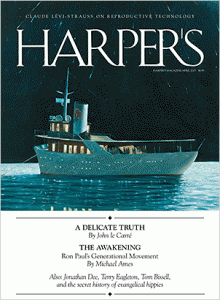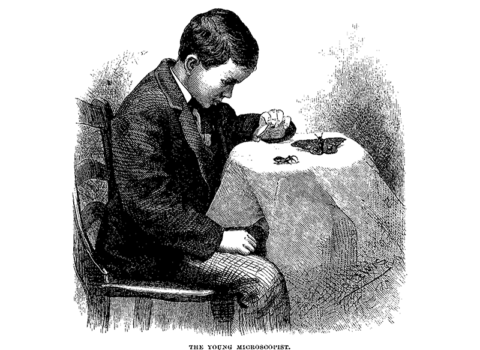Introducing the April issue of Harper’s Magazine
On John le Carré and the relaunch of the Folio section
I first read John le Carré’s The Spy Who Came in From the Cold when I was a teenager in the early 1970s, a time of utter disillusionment with the Cold War and the hot and bloody Vietnam War that was its offspring. Before George Smiley became a literary and cinematic icon, Alec Leamas personified my vision of the sordid, secret, and often self-defeating world of anti-communist espionage and its affiliated crusades. Leamas wasn’t just an antihero, he was the anti–James Bond — no glamor, no glory; just gray misery, treachery, and an unhappy ending.
The Spy Who Came in From the Cold’s plot — which turns on honorable, somewhat self-destructive people manipulated to their demise by supposed allies in the name of dubious virtue — made me a lifelong devotee of le Carré, even if he never again wrote anything quite so darkly satisfying to me. In those days, I also thrilled to his frank and non-dogmatic anti-Americanism, for here was an anti-communist writer from inside the system who refused to toe the party line in the great ideological battle between East and West.
“You must believe in something . . . something like God,” pleads Leamas’s love interest, Liz Gold. “Sorry, Liz, you’ve got it wrong,” he replies. “I don’t like Americans and public schools. I don’t like military parades and people who play soldiers . . . I don’t like people who tell me what I ought to think.”
More than forty years after my first encounter with Leamas, and fifty years after The Spy Who Came in From the Cold was published, le Carré is still writing brilliantly about foolish people playing soldier at the behest of cynical politicians for whom the national interest is nothing more than self-interest. And since le Carré does this better than anyone else writing in English, in either fiction or non-fiction, Harper’s Magazine is delighted to present the first chapter of his forthcoming novel, A Delicate Truth, exclusively for subscribers and newsstand customers.
Of course, I won’t give away the plot or the ending of the book, which will be published in its entirety in May. To be sure, Chapter One could stand on its own as a fine short story or novella. But connoisseurs of le Carré know that while there’s nothing like the excitement of cracking the first twenty pages or so, the anticipatory dread of what’s to come in the last twenty will drive you through to the conclusion. For now, it’s enough to say that once you’ve finished Chapter One in Harper’s, you’ll see why we’ve published le Carre’s non-fiction Afterword as well, in commemoration of the fiftieth anniversary of The Spy Who Came in From the Cold. This short essay is a wonderful, intimate way to meet le Carré. It’s revelatory, but more than that, I think readers will find in it an intellectual, artistic, and political sensibility that has persisted through more than five decades of work, and that is essential to understanding this extraordinary writer.
Not coincidentally, the publication of John le Carré in Harper’s Magazine marks the return of the magazine’s Folio section, launched in the October 1992 issue with another fictional tour de force, “Pafko at the Wall” by Don DeLillo. Like Chapter One of A Delicate Truth, “Pafko at the Wall” stood proudly on its own, though it ultimately served as the prologue to DeLillo’s novel Underworld, perhaps his masterpiece, published five years later. Like many things in the history of Harper’s, Folio was conjured from a mix of editorial vision and practical necessity. When Tina Brown was appointed editor of The New Yorker in June 1992, I assumed she would begin running much shorter pieces. Harper’s response, I told Lewis Lapham, Michael Pollan, and Gerry Marzorati at a hastily organized lunch, should be from time to time to run much longer pieces that might not only satisfy the cravings of frustrated New Yorker readers but also accommodate Harper’s contributors who simply needed more space to say what they wanted to say. As it happened, DeLillo’s manuscript had just come in and was far too long to fit any of our rubrics, three of which — Index, Readings, and Annotation — had become the hallmarks of a new format, launched in 1984, that emphasized brevity. We’re still committed to concision, of course, but in this age of web-driven snippets, we believe there’s all the more need for writers to be able to think in depth and at sufficient length to tell complex stories. Thus was Folio born, and now reborn. We were thrilled with the result in 1992, and we’re similarly delighted to reintroduce it in 2013.
If you already subscribe to Harper’s Magazine or regularly buy it on the newsstand, I congratulate you on your timing; if you don’t, or have never read us or John le Carré, please join the hundreds of thousands of literate, alert, and open-minded readers who know how hard we work to publish America’s best journalism, essays, and fiction by clicking here to subscribe. Harper’s is worth the price.




